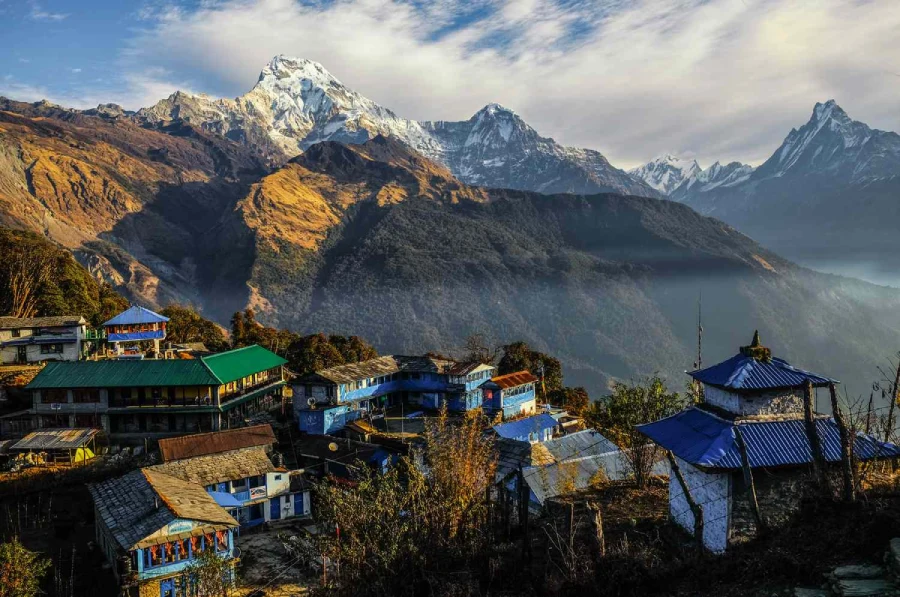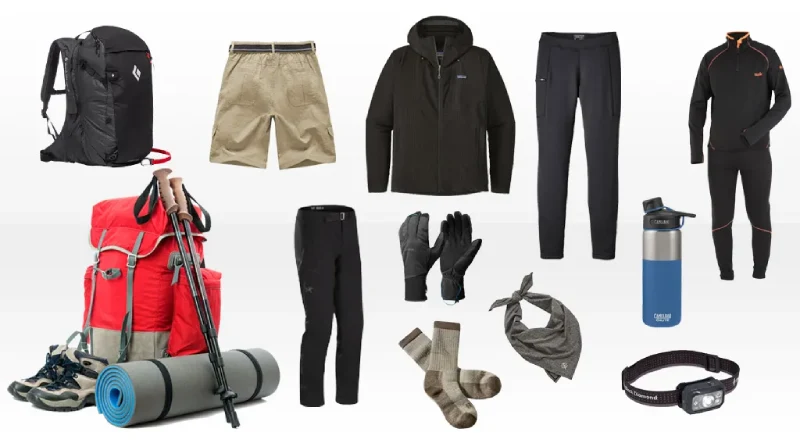
How to Prepare for Trekking in Nepal? Tips for Safe and Planned Trek
Are you someone who loves adventures and thrills? Do you continuously want to go for adventurous vacations and increase your adrenaline level? In that case, trekking in Nepal could be a perfect vacation plan for you. However, you must be aware of how to prepare for trekking in Nepal before actually heading out to the mountains.
However, trekking certainly is not an easy task and requires much preparation and planning beforehand. Trekkers must know about the routes, maps, strength level, and most importantly the trekking gear required in Nepal.
If you also want to go trekking around some of the tallest mountains in the world, you must read this blog from the start to the end. Being the perfect travel agency in Nepal, Mercy Holidays contains exceptional trekking guides and experts who have handpicked some of the major ways to prepare for trekking in Nepal. So, this blog can help you a lot in planning, preparing, also also for looking out for adequate gear for trekking in Nepal.
Is Trekking in Nepal Risky?

Nepal offers different trekking routes based on different factors like difficulty level, altitude, etc. Some trekking routes are very easy that even children can do but on the other hand, the Himalayas of Nepal also have several trekking destinations that require much effort and physical strain. However, if you are an adventure lover and want to actually “be” in the mountains, treks are not considered risky.
Before some times, trekking used to be risky due to several factors like lack of communication, emergency evacuation, and other facilities. However, as Nepal is gradually developing and the government is also looking towards the tourism industry, currently trekking in Nepal is almost completely risk-free.
Still, let us list out a few of the major risk factors that one might face in the remote Himalayas after coming from an urban civilization with all the facilities right in their hands.
- Altitude sickness is one of the most common risks in the Himalayas of Nepal due to lack of adequate oxygen above 2500m to 3000m. Not to mention, trekking in Nepal might take you to an altitude of 5000 meters and beyond.
- In treks like Everest Base Camp, there exist problems in finding appropriate drinking water as the temperature is very low so tap water remains frozen for most of the time.
- Sometimes the weather might be unpredictable causing delays in the flights and trekking journey.
- One of the most scary parts about the Himalayas is the Avalanche (sudden roll down of ice).
Experts’ Tips to Prepare for Trekking in Nepal
If you plan and prepare well, trekking in Nepal will not be risky. Besides, these trekkers acknowledge these trails for the adrenaline rush they offer along with challenges and adventures. For any adventure lover, Nepal probably sets itself as heaven with so many mountains, summits, trekking routes, hikes, tours, and more.
However, as the blog is related to trekking in Nepal, here are a few essential tips from our expert guides and trekkers for anyone visiting Nepal for trekking or hiking adventures.
1) Put extra Effort into Physical Health
If you plan to walk beside the gigantic Himalayas, you need to be perfectly fit and healthy physically. Even a small compromise in physical fitness can have a huge impact on the overall trekking adventure in Nepal. You need to make sure that you are physically ready for any trekking routes you choose. Whether it is the easiest trail or the most difficult one, whether it is a multi-day trekking adventure or a single-day hike, physical fitness is very important to trek in Nepal successfully.
Here are some specific training you can do to keep yourself physically fit for the trekking adventure in Nepal.
- Cardiovascular Training: Cardiovascular health is very important for trekking in Nepal as you will have to cross higher altitudes. As the altitude increases, the oxygen level decreases. In such cases, cardiovascular training can help your body use oxygen more efficiently.
- Flexibility and Mobility Training: Trekking also requires people to be highly flexible and mobile. Trekkers have to pass through different uneven terrains where the body’s flexibility and mobility can resist the chances of physical injuries.
- Endurance Training: Another important thing is endurance. You must train to walk longer distances too, with heavy backpacks. This helps you do the same during long walks in difficult terrains in the Himalayas of Nepal.
2) Get Ideas from other experts
If you are visiting a new place or going on some adventurous journeys, remember to get some ideas from the ones who have already been there. Watch different videos, read some blogs, contact different trekking agencies, talk to some guides, and collect all the necessary information about the destination you plan to go to.
If you are clueless and need even more help regarding any trekking routes in Nepal, you can contact Mercy Holidays as our trek and mountaineering experts team can assist you in understanding the circuit while also giving you detailed information about how to prepare for trekking in Nepal. Besides, there are also several blog pages, YouTube videos, vlogs, podcasts, etc, you can refer to while understanding the circuit and other important things.
3) Research and Select the Right Trek
Selecting the right trekking route is one of the most important factors for a safe and enjoyable trekking adventure in Nepal. Even though all the routes take you around the snow-covered mountains, each trekking route is significantly different from the others based on the difficulty level, crowdedness level, weather, and climate factor, and also based on the altitude.
Here is how you can categorize the trek in the Nepali Himalayas:
- Easy treks: For the first-timers, who have never been on any trek. Recommended: Ghandruk Trek, Ghorepani Poonhill trek, Pikey Peak trek, etc.
- Intermediate Treks: For the trekkers who have been on easy treks before but are not very confident about the expedition in a much higher altitude. Recommended: Annapurna Circuit Trek, Ruby Valley Trek, Upper Mustang Trek, etc.
- Challenging Treks: These treks are recommended for trained, professional, and expert trekkers. Recommended: Everest Three Pass Trek, Everest Base Camp Trek, Makalu Base Camp Trek, etc.
4) Know the Laws and Rules Before Trekking in Nepal
No matter which country or place you are trying to visit, you must be aware of the rules and laws of the country beforehand. This will help you resist any types of unknown problems to block your adventure and tourism. Nepal has different laws and regulations for trekking or any similar adventurous activities.
You need to know that many trekking areas require different passes for trekkers to enter and in different treks, guides are mandatory. Other than that, there are many more laws and rules that you must know before planning a trekking adventure in Nepal.
5) Be Attentive While Packing
Your backpack highly determines how well your trekking journey goes. Every trekker needs to be very attentive while packing and make sure that they include all the necessary things. Furthermore, we also suggest you recheck your backpack a couple of times before finalizing it.
If anything is missing from your packing list and you are aware of that, please kindly inform the travel agency you choose. Suppose you book any trekking package with us, we make sure to provide several essentials before actually hitting the trail. To know more about the necessary gear and equipment for trekking in Nepal, refer to the topic after this.
What are the important trekking gear in Nepal?
Here are some of the most important trekking gear in Nepal suggested by professional trekkers and guides. Some trekking routes might not require a lot of the trekking gear listed below. However, it’s good for all the trekkers to know about these gear and equipment while planning to trek in Nepal.

- Trekking Poles: Helpful in ascending steep paths.
- Trekking Boots: Comfortable and cozy while walking for a long time on the stony path.
- Trekking Pants: Warm and comfortable to trek at higher altitudes and flexibility.
- Sleeping Bag: Required to sleep in the colder regions at higher altitudes.
- First Aid Kit: Required in case of injuries while trekking in remote areas.
- Head Lamps/Torches: Helpful in case you need to trek in fog or darker skies.
- Water Bottle: Very essential to carry water and keep trekkers hydrated throughout the trekking adventure.
- Clothes as warm as possible: Highly recommended for the higher altitude as the temperature can go below -15 degrees to -20 degrees.
- Necessary Documents and Permits: Documents for emergency contacts and permits to enter different reserved or restricted areas.
- Duffle Bags: To carry all the necessary equipment and gear while trekking.
Furthermore, there are many more gears and equipment that are necessary for having a successful trekking adventure and experience in Nepal. If you have any queries regarding any of the gear, you can consult the trekking agency in Nepal that you are choosing.
Conclusion
Trekking in Nepal is very adventurous and enjoyable but at the same time risky if you are not well-prepared. Through this blog, we have tried to provide you with all the important preparations you should make while also recommending different trekking gear needed to trek in Nepal. This blog will certainly help all trekking enthusiasts prepare for trekking in Nepal and have the best experience in the Himalayas.
If you are looking forward to a memorable, amazing, and most importantly, safe trek in the Himalayas of Nepal, you can contact Mercy Holidays without any hesitation. Furthermore, we also recommend you check all the trekking packages that we have listed, select the one that suits your experience and preparedness, and then go for the booking process. Also, don’t forget to choose the trekking agency that is perfect for your requirements.
